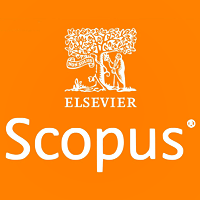
Статья размещена в открытом доступе и распространяется на условиях лицензии Creative Commons Attribution (CC BY).
ОРИГИНАЛЬНОЕ ИССЛЕДОВАНИЕ
Особенности транскриптомного профиля FAP+-клеток в опухолях молочной железы различных молекулярно-биологических подтипов
Томский национальный исследовательский медицинский центр Российской академии наук, Томск, Россия
Для корреспонденции: Евгения Сергеевна Григорьева
Переулок Кооперативный, д. 7, г. Томск, 634009, Россия; moc.liamg@se.aveyrogirg
Финансирование: работа выполнена при поддержке Российского научного фонда (грант № 25-65-00021).
Вклад авторов: А. Ю. Калинчук — написание и оформление статьи; И. А. Пацкан — биоинформатический анализ; М. М. Штадельман — сбор и анализ данных; Е. С. Григорьева — интерпретация полученных данных; Л. А. Таширева — интерпретация полученных данных, разработка концепции. Все авторы участвовали в финальном редактировании статьи.
Соблюдение этических стандартов: исследование одобрено этическим комитетом НИИ онкологии Томского НИМЦ (Протокол № 3 от 25 августа 2020 г.). Работа выполнена в соответствии с принципами Хельсинкской декларации (1964 г.) и ее поправками (1975 и 1983 гг.). Все пациентки предоставили письменное информированное согласие на участие в исследовании.
- Soongsathitanon J, Jamjuntra P, Sumransub N, Yangngam S, de la Fuente M, Landskron G, et al. Crosstalk between tumor-infiltrating immune cells and cancer-associated fibroblasts in tumor growth and immunosuppression of breast cancer. J Immunol Res. 2021; 2021: 8840066. DOI: 10.1155/2021/8840066.
- Ohlund D, Elyada E, Tuveson D. Fibroblast heterogeneity in the cancer wound. J Exp Med. 2014; 211 (8): 1503–23. DOI: 10.1084/jem.20140692.
- Liu T, Zhou L, Li D, Andl T, Zhang Y. Cancer-associated fibroblasts build and secure the tumor microenvironment. Front Cell Dev Biol. 2019; 7: 60. DOI: 10.3389/fcell.2019.00060.
- Ershaid N, Sharon Y, Doron H, Raz Y, Shani O, Cohen N, et al. Nlrp3 inflammasome in fibroblasts links tissue damage with inflammation in breast cancer progression and metastasis. Nat Commun. 2019; 10 (1): 4375. DOI: 10.1038/s41467-019-12370-8.
- Suh J, Kim DH, Lee YH, Jang JH, Surh YJ. Fibroblast growth factor-2, derived from cancer-associated fibroblasts, stimulates growth and progression of human breast cancer cells via Fgfr1 signaling. Mol Carcinog. 2020; 59 (9): 1028–40. DOI: 10.1002/mc.23233.
- Fitzgerald AA, Weiner LM. The role of fibroblast activation protein in health and malignancy. Cancer Metastasis Rev. 2020; 39 (3): 783–803. DOI: 10.1007/s10555-020-09909-3.
- Vallejo-Armenta P, Ferro-Flores G, Santos-Cuevas C, GarcíaPérez FO, Casanova-Triviño P, Sandoval-Bonilla B, et al. [99mTc] Tc-iFAP/SPECT tumor stroma imaging: acquisition and analysis of clinical images in six different cancer entities. Pharmaceuticals (Basel). 2022;15(6):729. DOI: 10.3390/ph15060729.
- Tchou J, Zhang PJ, Bi Y, Satija C, Marjumdar R, Stephen TL, et al. Fibroblast activation protein expression by stromal cells and tumorassociated macrophages in human breast cancer. Hum Pathol. 2013; 44 (11): 2549–57. DOI: 10.1016/j.humpath.2013.06.016.
- Mohammed Ali DA, Salah H. Immunohistochemical study of fibroblast activation protein and α-smooth muscle actin expression and distribution in triple negative breast cancer. Int J Cancer Biomed Res. 2020; 4 (1): 27–34. DOI: 10.21608/jcbr.2020.26388.1020.
- Croizer H, Mhaidly R, Kieffer Y, et al. Deciphering the spatial landscape and plasticity of immunosuppressive fibroblasts in breast cancer. Nat Commun. 2024; 15: 2806. DOI: 10.1038/s41467-024-47068-z.
- Bonneau C, Eliès A, Kieffer Y, Bourachot B, Ladoire S, Pelon F, et al. A subset of activated fibroblasts is associated with distant relapse in early luminal breast cancer. Breast Cancer Res. 2020; 22 (1): 76. DOI: 10.1186/s13058-020-01311-9.
- Tashireva L, Grigoryeva E, Alifanov V, Iamshchikov P, Zavyalova M, Perelmuter V, et al. Spatial Heterogeneity of Integrins and Their Ligands in Primary Breast Tumors. Discov Med. 2023; 35 (178): 910–20. DOI: 10.24976/Discov.Med.202335178.86.
- Tashireva LA, Kalinchuk AY, Gerashchenko TS, Menyailo M, Khozyainova A, Denisov EV, Perelmuter VM, et al. Spatial Profile of Tumor Microenvironment in PD-L1-Negative and PD-L1-Positive Triple-Negative Breast Cancer. Int J Mol Sci. 2023; 24 (2): 1433. DOI: 10.3390/ijms24021433.
- Szklarczyk D, Kirsch R, Koutrouli M, Nastou K, Mehryary F, Hachilif R, et al. The STRING database in 2023: protein-protein association networks and functional enrichment analyses for any sequenced genome of interest. Nucleic Acids Res. 2023; 51 (D1): D638–D646. DOI: 10.1093/nar/gkac1000.
- The Gene Ontology Consortium, et al. The Gene Ontology knowledgebase in 2023. Genetics. 2023; 224 (1): iyad031. DOI: 10.1093/genetics/iyad031.
- Hao Y, Stuart T, Kowalski MH, et al. Dictionary learning for integrative, multimodal and scalable single-cell analysis. Nat Biotechnol. 2024; 42 (2): 293–304. DOI: 10.1038/s41587-023-01767-y.
- Kolde R, et al. pheatmap: Pretty Heatmaps. R package version 1.0.13. 2025. Available from: https://CRAN.R-project.org/package=pheatmap.
- Neuwirth E, et al. RColorBrewer: ColorBrewer Palettes. R package version 1.1-3. 2022. Available from: https://CRAN.R-project.org/ package=RColorBrewer.
- Wickham H, François R, Henry L, Müller K, Vaughan D, et al. dplyr: A Grammar of Data Manipulation. R package version 1.1.4. 2025. Available from: https://dplyr.tidyverse.org.
- Sun X, Hu X. Unveiling matrix metalloproteinase 13’s dynamic role in breast cancer: a link to physical changes and prognostic modulation. Int J Mol Sci. 2025; 26 (7): 3083. DOI: 10.3390/ijms26073083.
- Xu W, Yang H, Xu K, Zhu A, Hall SRR, Jia Y, et al. Transitional CXCL14+ cancer-associated fibroblasts enhance tumour metastasis and confer resistance to EGFR-TKIs, revealing therapeutic vulnerability to filgotinib in lung adenocarcinoma. Clin Transl Med. 2025; 15 (4): e70281. DOI: 10.1002/ctm2.70281.
- Fan G, Yu B, Tang L, Zhu R, Chen J, Zhu Y, et al. TSPAN8+ myofibroblastic cancer-associated fibroblasts promote chemoresistance in patients with breast cancer. Sci Transl Med. 2024; 16 (741): eadj5705. DOI: 10.1126/scitranslmed.adj5705.
- Zhu GQ, Tang Z, Huang R, et al. CD36+ cancer-associated fibroblasts provide immunosuppressive microenvironment for hepatocellular carcinoma via secretion of macrophage migration inhibitory factor. Cell Discov. 2023; 9: 25. DOI: 10.1038/s41421-023-00529-z.
- Ge W, Yue M, Lin R, Zhou T, Xu H, Wang Y, et al. PLA2G2A+ cancer-associated fibroblasts mediate pancreatic cancer immune escape via impeding antitumor immune response of CD8+ cytotoxic T cells. Cancer Lett. 2023; 558: 216095. DOI: 10.1016/j.canlet.2023.216095.
- Watanabe K, Shiga K, Maeda A, Harata S, Yanagita T, Suzuki T, et al. Chitinase 3-like 1 secreted from cancer-associated fibroblasts promotes tumor angiogenesis via interleukin-8 secretion in colorectal cancer. Int J Oncol. 2022; 60 (1): 3. DOI: 10.3892/ijo.2021.5293.
- Simpson AD, Soo YWJ, Rieunier G, et al. Type 1 IGF receptor associates with adverse outcome and cellular radioresistance in paediatric high-grade glioma. Br J Cancer. 2020; 122: 624–9. DOI: 10.1038/s41416-019-0677-1.
- Chen Y, Lu A, Hu Z, Li J, Lu J. ERBB3 targeting: a promising approach to overcoming cancer therapeutic resistance. Cancer Lett. 2024; 599: 217146. DOI: 10.1016/j.canlet.2024.217146.
- Huang W, Ding X. Serum biomarkers analyzed by LC-MS/MS as predictors for short outcome of non-small cell lung cancer patients treated with chemoradiotherapy. Neoplasma. 2013; 60: 11–18.
- Chen CI, Kuo DY, Chuang HY. FASN inhibition shows the potential for enhancing radiotherapy outcomes by targeting glycolysis, AKT, and ERK pathways in breast cancer. Int J Radiat Biol. 2025; 101 (3): 292–303. DOI: 10.1080/09553002.2024.2446585.
- Sun H, Zhou R, Zheng Y, et al. CRIP1 cooperates with BRCA2 to drive the nuclear enrichment of RAD51 and to facilitate homologous repair upon DNA damage induced by chemotherapy. Oncogene. 2021; 40: 5342–55. DOI: 10.1038/s41388-021-01932-0.
- Sánchez-Tilló E, Siles L, de Barrios O, Cuatrecasas M, Vaquero EC, Castells A, et al. Expanding roles of ZEB factors in tumorigenesis and tumor progression. Am J Cancer Res. 2011; 1 (7): 897–912.
- Vandamme N, Denecker G, Bruneel K, et al. The EMT transcription factor ZEB2 promotes proliferation of primary and metastatic melanoma while suppressing an invasive, mesenchymal-like phenotype. Cancer Res. 2020; 80 (14): 2983–95. DOI: 10.1158/0008-5472.CAN-19-2373.
- Yahyanejad S, Theys J, Vooijs M. Targeting Notch to overcome radiation resistance. Oncotarget. 2016;7(7):7610-28. DOI: 10.18632/oncotarget.6714.
- Xiu G, Sui X, Wang Y, Zhang Z. FOXM1 regulates radiosensitivity of lung cancer cell partly by upregulating KIF20A. Eur J Pharmacol. 2018; 833: 79–85. DOI: 10.1016/j.ejphar.2018.04.021.
- Zhao M, Li J, Wang R, Mi L, Gu Y, Chen R, et al. Ubiquitination-binding enzyme 2C is associated with cancer development and prognosis and is a potential therapeutic target. Onco Targets Ther. 2024; 17: 1159–71. DOI: 10.2147/OTT.S485053.
- Im J, Lawrence J, Seelig D, et al. FoxM1-dependent RAD51 and BRCA2 signaling protects idiopathic pulmonary fibrosis fibroblasts from radiation-induced cell death. Cell Death Dis. 2018; 9: 584. DOI: 10.1038/s41419-018-0652-4.
- Sun C, Du Z, Yang W, Wang Q. Transglutaminase 2 nuclear localization enhances glioblastoma radiation resistance. Discov Oncol. 2025; 16 (1): 952. DOI: 10.1007/s12672-025-02599-9.
